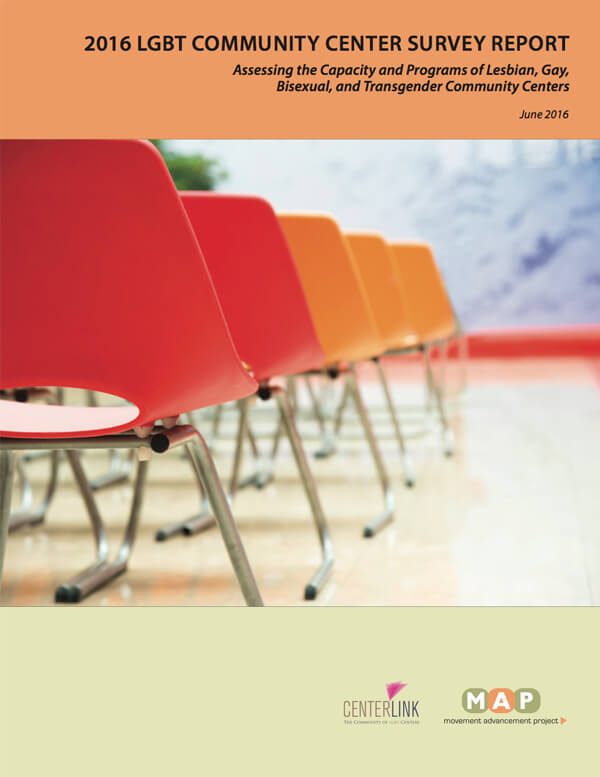The Bottom Line
The biennial LGBT Community Center Survey Report provides a detailed picture of centers’ staff and boards, program priorities, constituencies and services, infrastructure, fundraising, budgets, and technical assistance needs. The 2016 report finds that local community centers serving lesbian, gay, bisexual, and transgender people provide vital information, education, and health services to over 43,500 people each week.
2016 LGBT Community Center Survey Report Download 2016 LGBT Community Center Survey Report: CyberCenters Download 2014 LGBT Community Center Survey Report Download 2014 LGBT Community Center Survey Report: CyberCenters Download 2012 LGBT Community Center Survey Report Download 2010 LGBT Community Center Survey Report Download 2008 LGBT Community Center Survey Report Download
Abstract
The LGBT Community Center Survey Report, prepared jointly by MAP and CenterLink and published every two years, provides an overview of local lesbian, gay, bisexual, and transgender (LGBT) community centers, including their capacity, their programs and services, the people they serve, and their technical assistance needs.
The 2016 report analyzes data from 143 LGBT community centers LGBT community centers from 40 states, the District of Columbia, and Puerto Rico. Among the report’s key findings:
- LGBT community centers serve over 43,500 people each week and refer over 6,000 people weekly to other organizations or agencies for services and assistance.
- Both large and small LGBT centers reported increased revenue, for combined 2015 revenue of $176 million, and smaller centers, often operating in locations and communities that are least accepting of LGBT people, experienced a 17% increase in revenue over the course of 2014 to 2015 compared to a 6% increase for large centers.
- Despite the increase in average center revenue, many centers still struggle with a lack of funding and resources; 31% of all surveyed centers have no paid staff and rely solely on volunteers; and 63% have five or fewer paid staff. More than half of center staff (53%) identify as people of color.
- LGBT community center clientele is diverse and community centers often offer tailored programming: 82% of LGBT community centers offer specific programming for LGBT youth, 88% for transgender people, 61% for LGBT older adults, and 51% for LGBT people of color.
- The demographics of LGBT community center patrons vary greatly among centers. On average however, center patrons are disproportionately male, people of color, transgender, and/or low-income.
- LGBT community centers tailor their programs to meet the diverse needs of their community: 82% of LGBT community centers offer specific programming for LGBT youth, 88% for transgender people, 61% for LGBT older adults, and 51% for LGBT people of color.


